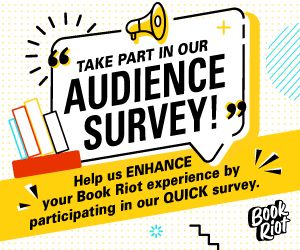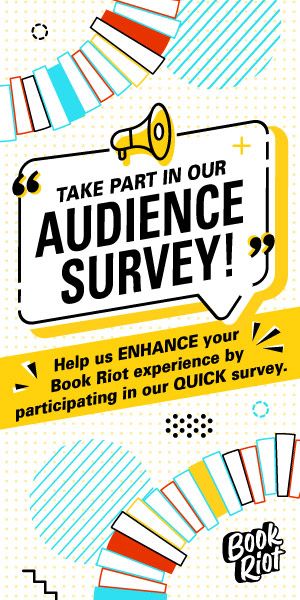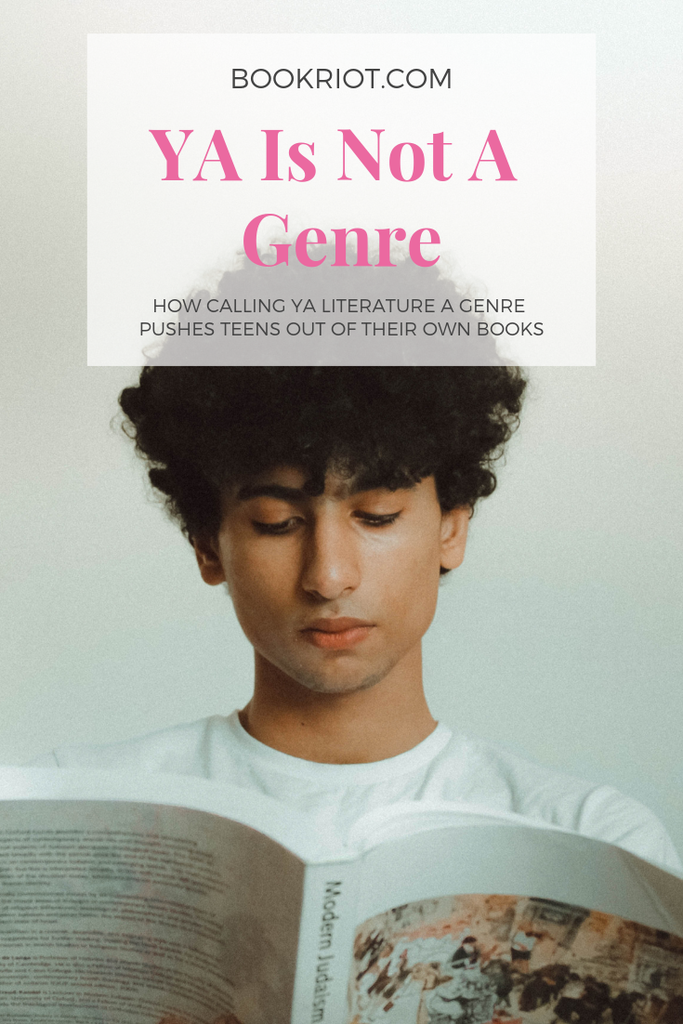
Do Teens Get Pushed Out of YA Books When It’s Called A Genre?
There’s been a lot of discussion in the YA book world about how YA books are becoming less and less about teen readers and instead, more about the interests of adults who like reading YA. Some claim that the community in fact isolates teens. The oft-cited statistic that 55% of YA is purchased by adults, which came out in 2012, and the fact that more YA novels are featuring college-age protagonists, as well as teens who are 17 and wildly independent, further uphold this argument.
It’s hard not to wonder, too, if the fact that many refer to YA as a genre, as opposed to category of literature, is why it’s so easy for teens to be pushed out and for adults to feel more ownership.
Genre, for those not familiar with the term, refers to a type of art that shares similar features. Often, there are standard and common conventions and restraints, as well as common tropes and set-ups. Science fiction is a genre. Romance is a genre. Fantasy and mystery are also genres.
Horror, despite what many suggest, is not a genre. It’s a mood. The mood of a book can transcend genre, in effect is applicable to any genre. There are indeed horror romances (think paranormal romance) as much as there are horror mysteries and horror realistic books.
A category of books, however, is broader than a mood or a genre. A category is who the book is intended for. It’s part of the marketing of a book, as well as a way for those who work with books to quickly ascertain the reader for whom the book would be most appropriate. Think of the category as an umbrella, with mood and genre falling beneath it. You have adult books as a category, and beneath it, you have mysteries, thrillers, romance, fantasy, and so forth. You can then weave mood among those genres.
YA, especially over the last decade, has been called a genre over and over. We see it not just from the casual reader—who often doesn’t know or care about the distinctions among genre, mood, or category—but also from publishers themselves, some of whom don’t last too long in the category. YA, seen as a genre, is less about who it is intended for and more about the commonalities among books. YA books as a genre are fast-paced, intended for quick consumption, often come as a series or come with some kind of media tie-in (in recent years, adaptations are a big part of this), and most importantly, feature a person who is “a young person” as a main character.
YA classified as a genre also means that books which have no business being called YA are called so. To Kill A Mockingbird is one such culprit, even though the book is narrated by a 9-year-old. Goosebumps? Also not YA. We see it, too, with books that young people often read in middle or high school, again regardless of the actual category the book belongs in.
But YA isn’t a genre. It’s a category.
Michael Cart, an expert in YA and in teen library services, outlines the growth of the term “young adult literature,” noting that the growth of the category came at the same time teen culture found itself emerging in the American landscape. He also notes that the Young Adult Services arm of the American Library Association often included books published for adults when they began their best books for young adults lists, but that changed in the 70s with the growth of the dedicated category:
“Book people were talking the talk in the 1940s and 1950s—but they had a teenage readership without a literature to match its evolving interests and its socioeconomic, emotional, and psychological needs. The genre fiction that was epidemic in the 1940s, 1950s, and early 1960s could not hope to do that—and the Young Adult Services Division recognized it. For several decades its annual lists of the best books for young adults included only books written for all adults, novels such as Isaac Asimov’s Fantastic Voyage (1966), Charles Portis’s True Grit (1968), and Ray Bradbury’s I Sing the Body Electric! (1969).
It wasn’t until 1970—three years after the formative publications of The Outsiders and The Contender—that a newly emergent, serious young adult literature was recognized. For the first time ever, an actual YA novel, written specifically for readers in that new, in-between segment of the population—Barbara Wersba’s Run Softly, Go Fast, about a teenage boy’s love-hate relationship with his father—was first admitted to the list.”
What Cart emphasizes here is something worth chewing on: he defines a teen readership as the impetus for the category’s birth. More, teen and young adult were seen as two different things until the late 50s, when the terms merged and teen literature morphed into young adult literature.
But is teen literature different from YA literature today?
When YA is seen as a genre, rather than a category, they are. It sounds like a game of semantics, but it’s not; teen literature emphasizes the teen aspect of the books and that they’re intended for teen readers. YA, on the other hand, is a genre that reaches any reader itching for a specific reading experience. The experience is one of a young person’s voice, with a specific pacing, and tropes that are worth loving or loathing (see the vitriol for things like love triangles).
It’s disheartening to hear teens feeling left out, and it’s equally disheartening to read reviews of YA books which emphasize how young the protagonist sounded or worse, how many stupid decisions they made. Why didn’t they just x or y or z? These reviews highlight the key difference between YA as seen as a category and YA as seen as a genre: teenagers being teenagers.
There are smart, savvy teenagers. But teenagers aren’t adults. They don’t have a fully-developed brain, and they do a lot of dumb things because doing dumb or illogical things is part of growing up.
Moreover, teens are fresher to books than adults. This means that those predictable twisty books that are panned for being “too obvious” and those books which feature “overdone” tropes aren’t seen that way for teens, who are discovering these storytelling devices with eager, excited, and non-jaded eyes. They don’t have the decades of reading experience adults do, and thus, they’re reading books intended for them to inspire wonder, surprise, and excitement.
They’re also reading books they connect to and with, as much as those aspects of relatability aren’t relatable to adults.
It’s great that YA can be enjoyed by readers of any age. It should be. YA is a category bursting with innovative storytelling, with creative plots, and well-rendered characters, along with strong pacing and impactful writing. Literary YA is on par with high literary adult books, and YA nonfiction as engaging and provocative as adult.
But YA isn’t a genre. It’s not and has never been intended for adult readers. The core of YA is the teenager. It’s the teen reader, seeking someone like themselves. Seeking stories that they relate to. Seeking stories that are written for them, with them in mind, and with compassion for where they are right here and now.
And when teens themselves are seeing it and feeling it, we need to sit back and listen.


















